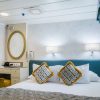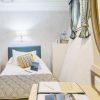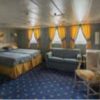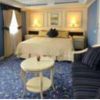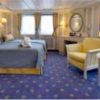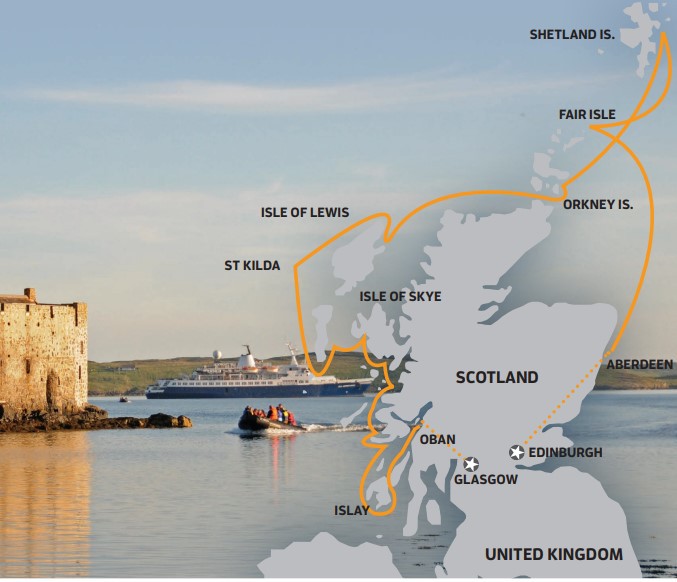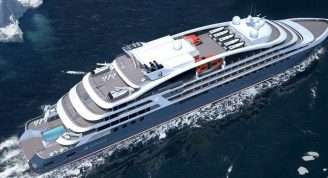Description
Explore Scotland’s heartland harbours, villages and islands. It’s history of ages past, whilst making your own history viewing brochs, standing stones and castles. Isles where the wildlife is in abundance. A land where the people are waiting to welcome you to their unique culture – a culture which may reflect threads of your own heritage.
Check out the highlights from our 2018 tour here;
www.wildearth-travel.com/highlights-from-our-Scotlandin-Depth-2018-trip/
Trip Name
Scotland in Depth with Wild Earth Travel
Days
12
Overview
Vessel Type: Expedition
Length: 71 metres
Passenger Capacity: 50
Built / refurbished: 1985 / 2022
The 71mtr/232ft expedition vessel Polar Pioneer is a great way to explore the polar regions. Originally built in 1982, she was a research vessel designed to navigate the polar regions with heavy sea ice thanks to her reinforced hull. She has been refurbished in 2022 and takes 48 passengers. She has 29 comfortable cabins ranging from the Captain’s Suite, mini-suite, twin cabins with private facilities, and twin and triple cabins with shared facilities. The Polar Pioneer is crewed by experts with decades of experience in polar waters and has a medic and clinic on board.
The Polar Pioneer has 6 zodiacs so that all guests can go ashore simultaneously, and boots are provided when going ashore. After being out in the cold, guests can warm up in the sauna. Her large deck space has raised areas ideal for photographers. There is no shortage of incredible photography opportunities, from penguins, whales, breath-taking glaciers, and much more in this once-in-a-lifetime experience. There are vegetarian and vegan food options, beer, and a wine selection.
Join us and our team of passionate and highly experienced, professional polar guides as we venture to the far flung corners of the world by foot, zodiac, kayak and on skis.



